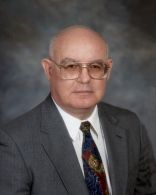Cave of the Winds: The Remarkable History of the NASA-Langley Full-Scale Wind Tunnel
Joseph R. Chambers
TUESDAY: June 5, 2012 2:00 P.M. in the H.J.E. Reid Auditorium.
(video) within the Langley firewall only
Abstract
When it was put into operation by the National Advisory Committee for Aeronautics (NACA) in 1931 the Langley Full-Scale Tunnel was the world’s largest wind tunnel and the only tunnel capable of testing full-scale powered airplanes. After viewing the gigantic facility, the media nicknamed the tunnel “The Cave of the Winds.” The tunnel with its huge 30- by 60-foot test section operated for over 78 years as NASA’s oldest wind tunnel and was recently demolished in 2011. Over 1,500 individual test subjects in this legendary facility included biplanes in the 1930s, historic Army and Navy aircraft during World War II, helicopters, vertical takeoff and landing aircraft, general aviation airplanes, space capsules, parawings, current fighters including the F/A-18 and F-22, and revolutionary transport configurations of the future. In addition, tests were conducted on submarines, inflatable airplanes, dirigibles, NASCAR automobiles-even a replica of the Wright Flyer of 1903. Over the years unique testing techniques were conceived and used at the tunnel including a world-famous free-flight, remotely-controlled model technique. This entertaining and informative presentation will include discussions of the construction and operational features of the facility, the famous aviation personalities who visited there, and a decade-by-decade overview of some of the more interesting and critical tests. Intended for the public, aerospace enthusiasts and historians, the material will include extensive photographs and film segments of actual tests. The basis of the presentation is a new NASA book of the same title by the speaker. The book is currently being prepared for printing by the agency later this year.
Speaker
 Joe Chambers is an aviation consultant who lives in Yorktown, VA. He retired from the NASA Langley Research Center in 1998 after a 36-year career as a researcher and manager of research activities on military and civil aircraft. He began his career in 1962 as a member of the research staff of the Langley Full-Scale Tunnel, where he specialized in flight dynamics research on a variety of aerospace vehicles including V/STOL configurations, parawing vehicles, re-entry vehicles, and fighter aircraft configurations. In 1974 he became the head of the Full-Scale Tunnel, the Langley 20-Foot Spin Tunnel, and related outdoor free-flight and drop-model testing. In 1989 he also became head of aircraft flight research at Langley in addition to his other responsibilities. In 1994 he was assigned to organize and manage a new group responsible for conducting systems-level analysis of the potential payoffs of advanced aircraft concepts and technology to help guide NASA research investments.
Joe Chambers is an aviation consultant who lives in Yorktown, VA. He retired from the NASA Langley Research Center in 1998 after a 36-year career as a researcher and manager of research activities on military and civil aircraft. He began his career in 1962 as a member of the research staff of the Langley Full-Scale Tunnel, where he specialized in flight dynamics research on a variety of aerospace vehicles including V/STOL configurations, parawing vehicles, re-entry vehicles, and fighter aircraft configurations. In 1974 he became the head of the Full-Scale Tunnel, the Langley 20-Foot Spin Tunnel, and related outdoor free-flight and drop-model testing. In 1989 he also became head of aircraft flight research at Langley in addition to his other responsibilities. In 1994 he was assigned to organize and manage a new group responsible for conducting systems-level analysis of the potential payoffs of advanced aircraft concepts and technology to help guide NASA research investments.
Mr. Chambers served as a representative of the United States on international committees and has given invited lectures on NASA’s aeronautics programs in Japan, Belgium, China, Australia, the United Kingdom, Canada, Italy, France, Germany, and Sweden.
Mr. Chambers received several of NASA’s highest awards, including the Outstanding Leadership Medal, the Exceptional Service Medal, and the Public Service Medal. He also received the coveted Arthur Flemming Award sponsored by the Washington DC Jaycees in 1975 as one of the Ten Most Outstanding Civil Servants for his management of NASA stall/spin research for military and civil aircraft.
Mr. Chambers is the author of over 50 NASA technical reports and publications. In his retirement, he has conducted historical research on the Langley Research Center and written seven NASA books on topics including an analysis of in-flight airflow condensation patterns for aircraft; contributions of the Langley Research Center to U.S. military aircraft of the 1990s; contributions of Langley to U.S. civil aircraft of the 1990s; Langley research on advanced concepts yet to be applied; the development and application of dynamic free-flight models; and the contributions of NASA to aviation.
Mr. Chambers earned a Bachelor of Science degree from Georgia Tech and a Master of Science degree from Virginia Tech.